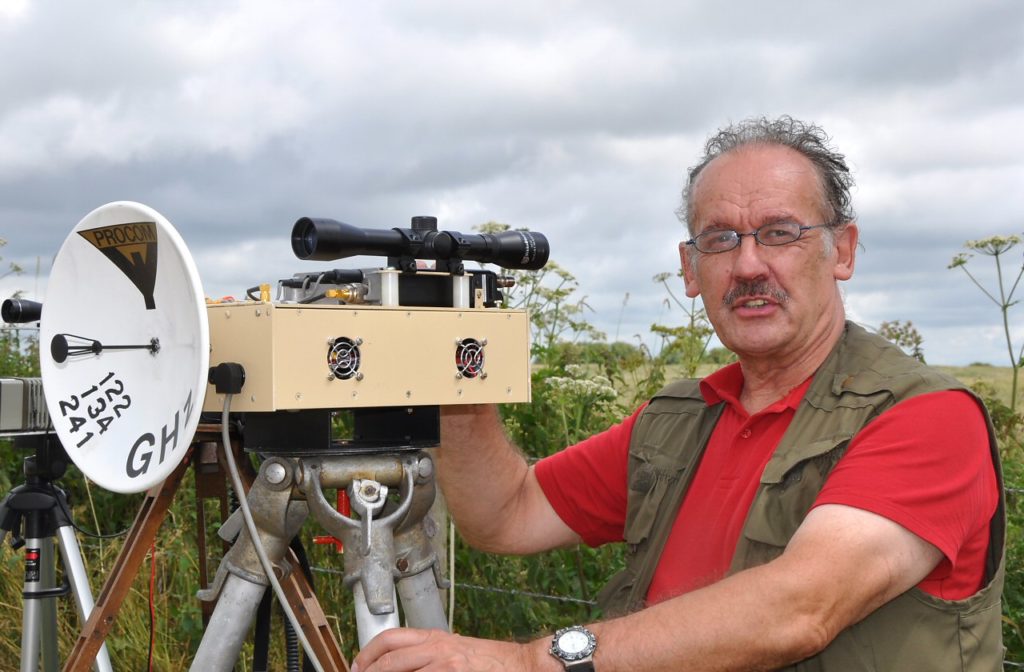122, 134 and 248 GHz
The three highest frequency bands in the UK amateur license are 122, 134 and 248GHz.
- 122 GHz is a secondary allocation and suffers from high Oxygen attenuation (similar to 60GHz)
- 134 GHz is a Primary band that is the preferred operating band for new portables
- 248 GHz can earn large multipliers in IARU contests, but is more difficult to obtain equipment for

The bands are becoming more accessible as commercial chipsets evolve. The RSGB Band Plan indicates where the current centres of activity are. In practice is dependent on convenient multiples from synthesised sources plus/minus an IF offset. Sources require good frequency stability and low phase noise etc. The telescopic site in the photo is an essential accessory as the antennas have high gains and narrow beamwidths that make alignment/pointing accuracy a challenge.
Higher Frequencies
In the UK, the standard amateur licence does not permit operation on higher bands. However for Full Licensees, access is permitted to a series of bands within the 275 GHz – 3 THz range if you apply for and hold by an appropriate NoV. More information about this is on our Terahertz page , including a link to an online NoV application.
At even higher frequencies, Free-space Lightwave activity is permitted as that occurs above the frequency limits in the ITU Radio regulations.










